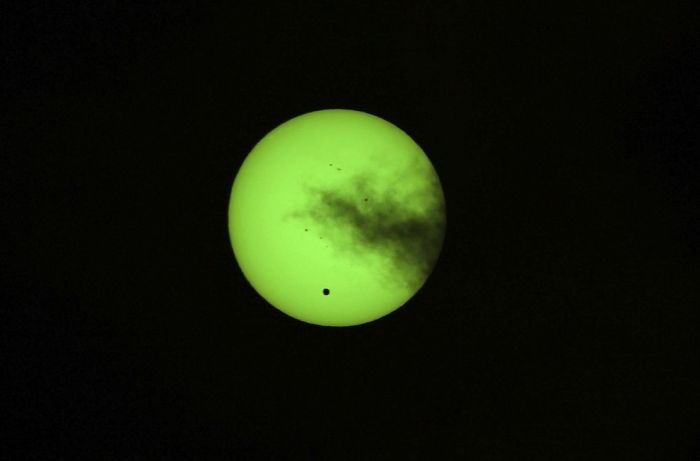|
|
Transit Of Venus Across The Sun
|
In 1663 Scottish mathematician James Gregory had suggested in his Optica Promota that observations of a transit of the planet Mercury, at widely spaced points on the surface of the Earth, could be used to calculate the solar parallax and hence the astronomical unit. Aware of this, a young Edmond Halley made observations of such a transit in 1676 from Saint Helena, but was disappointed to find that there had been only one other observation of the event and was not satisfied that the resulting calculation of the solar parallax at 45" was accurate. In a paper published in 1691, and a more refined one in 1716, he proposed that more accurate calculations could be made using measurements of a transit of Venus, although the next such event was not due until 1761. Halley died in 1742, but in 1761 numerous expeditions were made to various parts of the world so that precise observations of the transit could be made in order to make the calculations as described by Halley—an early example of international scientific collaboration. In an attempt to observe the first transit of the pair, scientists and explorers from Britain, Austria and France travelled to destinations around the world, including Siberia, Norway, Newfoundland and Madagascar. Most managed to observe at least part of the transit, but successful observations were made in particular by Jeremiah Dixon and Charles Mason at the Cape of Good Hope.
On the basis of his observation of the transit of Venus of 1761 from the Saint Petersburg Observatory, Mikhail Lomonosov predicted the existence of an atmosphere on Venus. Lomonosov detected the refraction of solar rays while observing the transit and inferred that only refraction through an atmosphere could explain the appearance of a light ring around the part of Venus that had not yet come into contact with the Sun's disk during the initial phase of transit.
For the 1769 transit, scientists traveled to Hudson Bay (Canada), San José del Cabo (Baja California, then under Spanish control), Tahiti, and Norway. The Czech astronomer Christian Mayer was invited by Catherine the Great to observe the transit in Saint Petersburg with Anders Johan Lexell, while other members of Russian Academy of Sciences went to eight other locations in the Russian Empire. In Philadelphia, the American Philosophical Society erected three temporary observatories and appointed a committee, of which David Rittenhouse was the head. The results of these observations were printed in the first volume of the Society's Transactions, published in 1771.
Observations were also made from Tahiti at a location still known as "Point Venus". This occurred on the first voyage of James Cook, after which Cook explored New Zealand and Australia.
|
|









